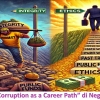King, F. J., Goodson, L., & Rohani, F. (2011). Higher-order thinking skills: Definition, teaching strategies, and assessment. Educational Services Program.
Lipman, M. (2003). Thinking in education (2nd ed.). Cambridge University Press.
McDavitt, D. S. (1999). Teaching for Understanding: Attaining higher order learning and increased achievement through experiential instruction. New York: Eric DRS.
Misrom, N. S., Husnin, H., Yusoff, R., & Hassan, A. (2020). Higher order thinking skills (HOTS) in education: The effectiveness of HOTS in inquiry-based learning (IBL). Universal Journal of Educational Research, 8(5), 1861–1870.
Miri, B., David, B. C., & Uri, Z. (2007). Purposely teaching for the promotion of higher-order thinking skills: A case of critical thinking. Research in Science Education, 37, 353–369.
Paul, R., & Elder, L. (2006). Critical thinking: Tools for taking charge of your learning and your life (2nd ed.). Prentice Hall.
Redaelli, S., Germani, F., Spitale, G., Biller‐Andorno, N., Brown, J., & Glöckler, S. (2024). Mastering critical thinking skills is strongly associated with the ability to recognize fakeness and misinformation. https://doi.org/10.31235/osf.io/hsz6a
Ritchhart, R., Church, M., & Morrison, K. (2011). Making thinking visible: How to promote engagement, understanding, and independence for all learners. Jossey-Bass.
Wiggins, G. P. (1998). Educative assessment: Designing assessments to inform and improve student performance. Jossey-Bass.
Wilson, L. O. (2016). Anderson and Krathwohl – Bloom’s taxonomy revised. The Second Principle. https://thesecondprinciple.com/teaching-essentials/beyond-bloom-cognitive-taxonomy/
Follow Instagram @kompasianacom juga Tiktok @kompasiana biar nggak ketinggalan event seru komunitas dan tips dapat cuan dari Kompasiana. Baca juga cerita inspiratif langsung dari smartphone kamu dengan bergabung di WhatsApp Channel Kompasiana di SINI








